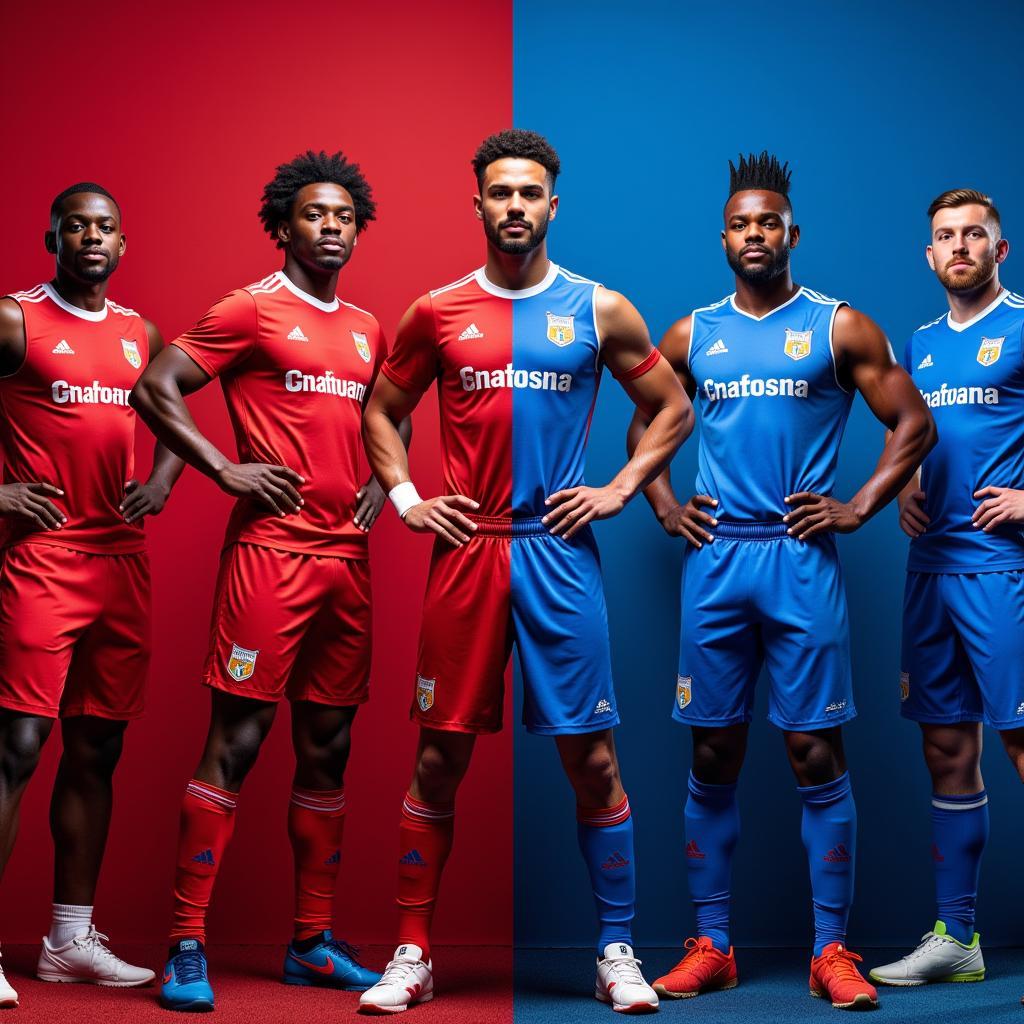The concept of “Color Teams” might sound unusual at first, but it holds a fascinating position in understanding group dynamics, particularly in competitive environments. While we don’t assign literal colors to teams in the real world (or do we?), the psychology of colors and their impact on human behavior can offer valuable insights. This exploration delves into how color associations influence team identity, communication, and ultimately, performance.
The Power of Color: More Than Just Aesthetics
Colors are powerful communicators. They evoke emotions, influence perceptions, and even trigger specific behaviors. This isn’t just about personal preference; it’s ingrained in our shared human experience and cultural understanding.
For instance, we associate red with energy, passion, and even aggression. Think of a sports team with red uniforms; they might be perceived as more intimidating and dominant. Conversely, blue, often linked with calmness and stability, might project an image of reliability and trustworthiness.
 Sports Team Colors Comparison
Sports Team Colors Comparison
Understanding these subconscious associations can be incredibly valuable, especially when considering team dynamics:
- Team Identity and Unity: Choosing a team color, even for a casual project, can foster a sense of belonging and shared purpose. It creates a visual identifier that strengthens team cohesion.
- Communication and Strategy: Color associations can play a subtle role in how teams communicate and strategize. A team known for its “fiery red” approach might be more inclined toward bold, assertive tactics.
- Performance and Perception: While not a magic bullet, aligning team activities with color associations can subtly influence performance and how the team is perceived by others.
Building a “Color Team”: It’s Not About Literal Hues
It’s crucial to understand that building a “color team” isn’t about assigning arbitrary colors to individuals or groups. It’s about recognizing the psychological impact of colors and leveraging those associations to foster positive team dynamics.
Here’s how you can apply color psychology to your team:
- Identify Team Values: What are the core values you want your team to embody? Are they about creativity, innovation, stability, or something else?
- Map Values to Colors: Once you have a clear understanding of your team’s values, you can start mapping those values to specific colors. For example, if innovation is key, you might lean toward colors like purple or orange, often associated with creativity and unconventionality.
- Integrate Colors Subtly: You don’t need to repaint the office or enforce a strict dress code. Subtle integrations can be just as effective – using specific colors in presentations, choosing team-building activities that align with your chosen color associations, or even incorporating them into your team logo or branding.
Color Teams in Action: Real-World Applications
The principles of color teams aren’t just theoretical; they have practical applications in various fields:
- Sports: As mentioned earlier, sports teams have long understood the power of color in shaping perceptions and influencing opponents.
- Marketing and Branding: Companies carefully select brand colors to evoke specific emotions and connect with their target audience.
- Workplace Dynamics: While less overt, some organizations use color psychology to design workspaces that promote collaboration, focus, or creativity.
Conclusion: Unlocking Team Potential Through Color
Understanding the psychology of color teams offers a unique perspective on group dynamics. While the concept might seem simple on the surface, the underlying principles have far-reaching implications for team building, communication, and overall performance. By consciously considering the power of color, we can unlock new levels of collaboration, creativity, and success in any team environment.
FAQ
1. Do I need to be an expert in color psychology to apply these principles?
No, you don’t need to be an expert. Even a basic understanding of common color associations can be helpful in shaping team dynamics.
2. Is it essential to choose just one color for my team?
Not necessarily. You can choose a primary color that represents your core value and then use complementary colors to reflect other important aspects of your team’s identity.
3. Can color teams help resolve conflicts within a group?
While not a direct solution for conflict resolution, understanding color psychology can offer insights into communication styles and potential areas of friction, aiding in conflict navigation.
Need Help?
For further assistance, please contact us at:
Phone Number: 0902476650
Email: [email protected]
Address: 139 Đ. Võ Văn Kiệt, Hoà Long, Bà Rịa, Bà Rịa – Vũng Tàu, Việt Nam.
Our customer support team is available 24/7 to assist you.





